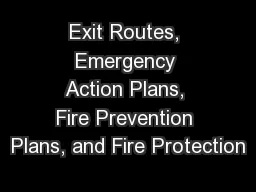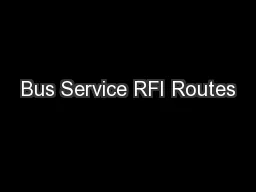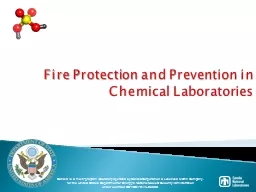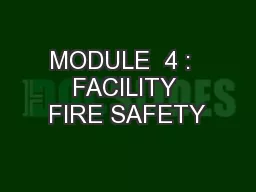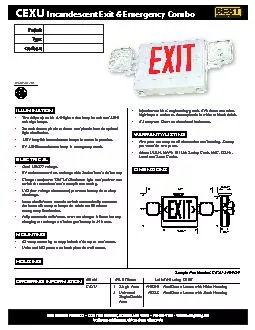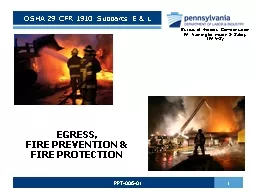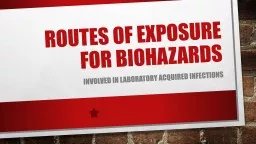PPT-Exit Routes, Emergency Action Plans, Fire Prevention Plans, and Fire Protection
Author : pasty-toler | Published Date : 2018-09-21
OSHA 10Hour General Industry Outreach Training F ires and explosions as well as other workplace incidents may require emergency actions and evacuations to protect
Presentation Embed Code
Download Presentation
Download Presentation The PPT/PDF document "Exit Routes, Emergency Action Plans, Fir..." is the property of its rightful owner. Permission is granted to download and print the materials on this website for personal, non-commercial use only, and to display it on your personal computer provided you do not modify the materials and that you retain all copyright notices contained in the materials. By downloading content from our website, you accept the terms of this agreement.
Exit Routes, Emergency Action Plans, Fire Prevention Plans, and Fire Protection: Transcript
Download Rules Of Document
"Exit Routes, Emergency Action Plans, Fire Prevention Plans, and Fire Protection"The content belongs to its owner. You may download and print it for personal use, without modification, and keep all copyright notices. By downloading, you agree to these terms.
Related Documents

